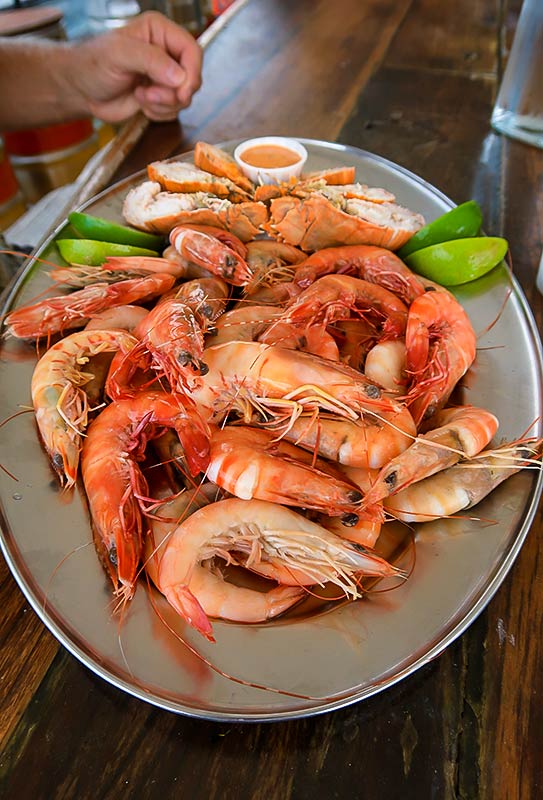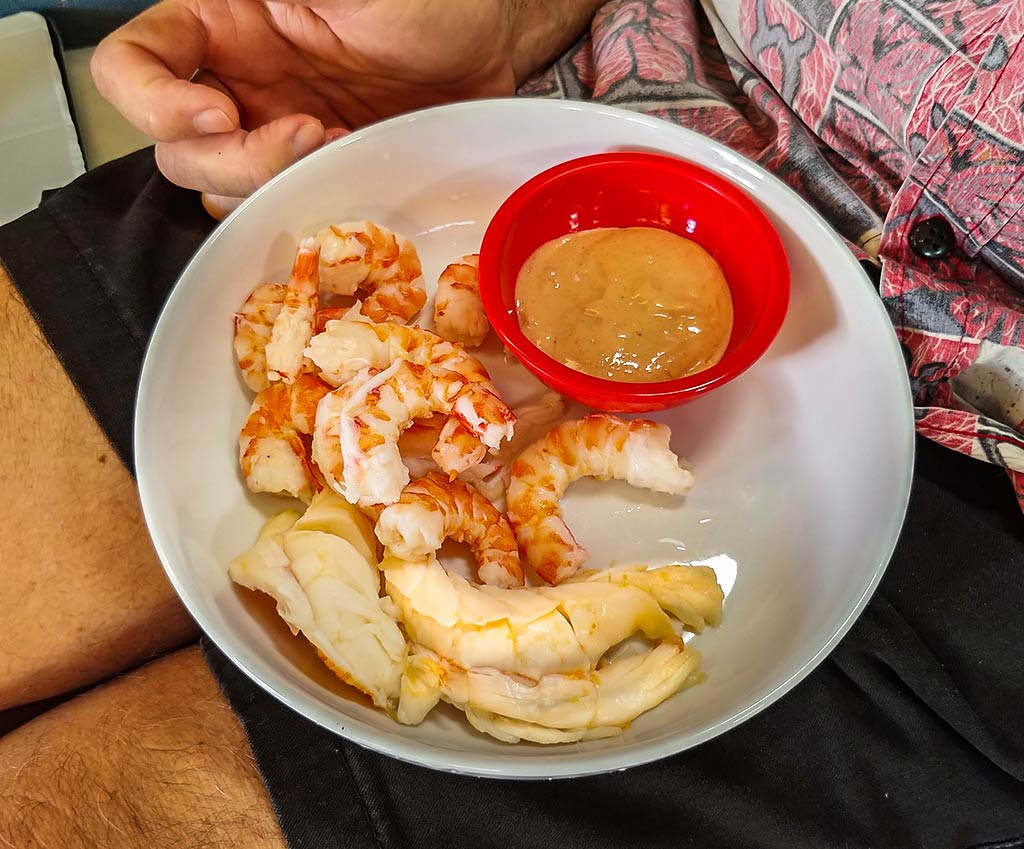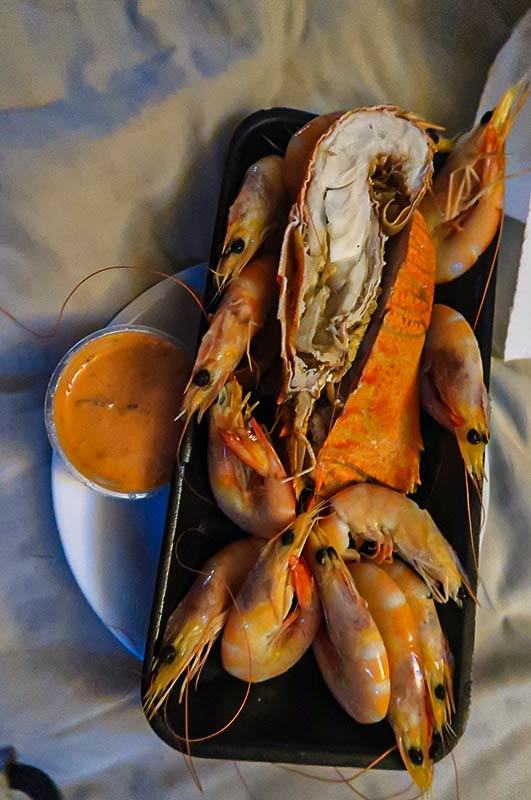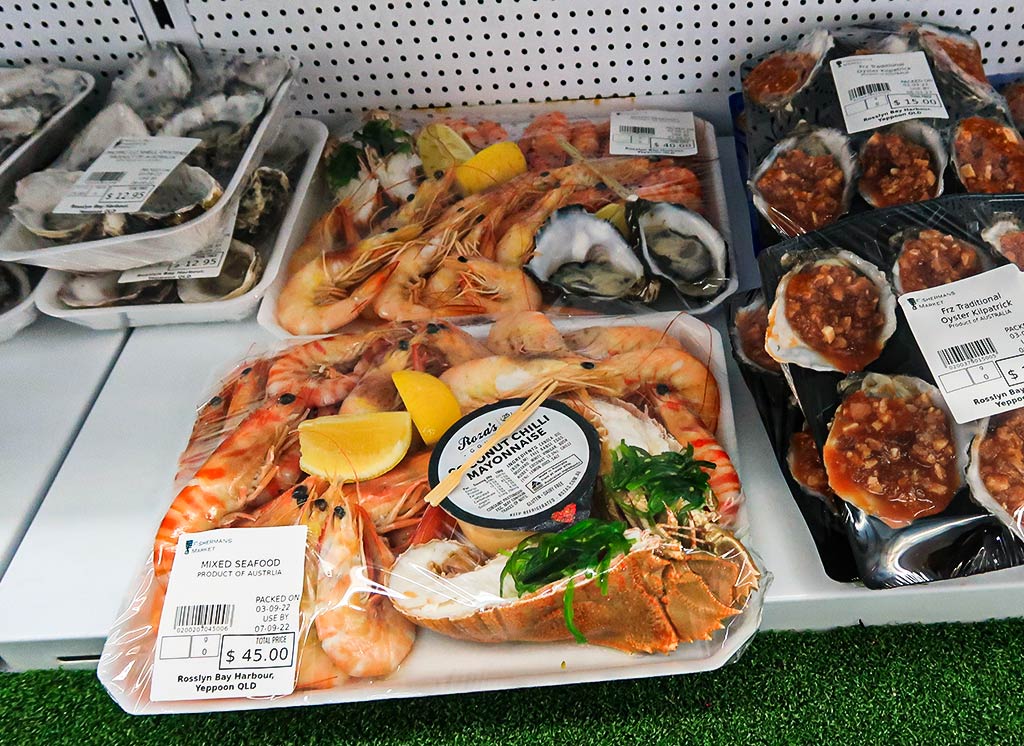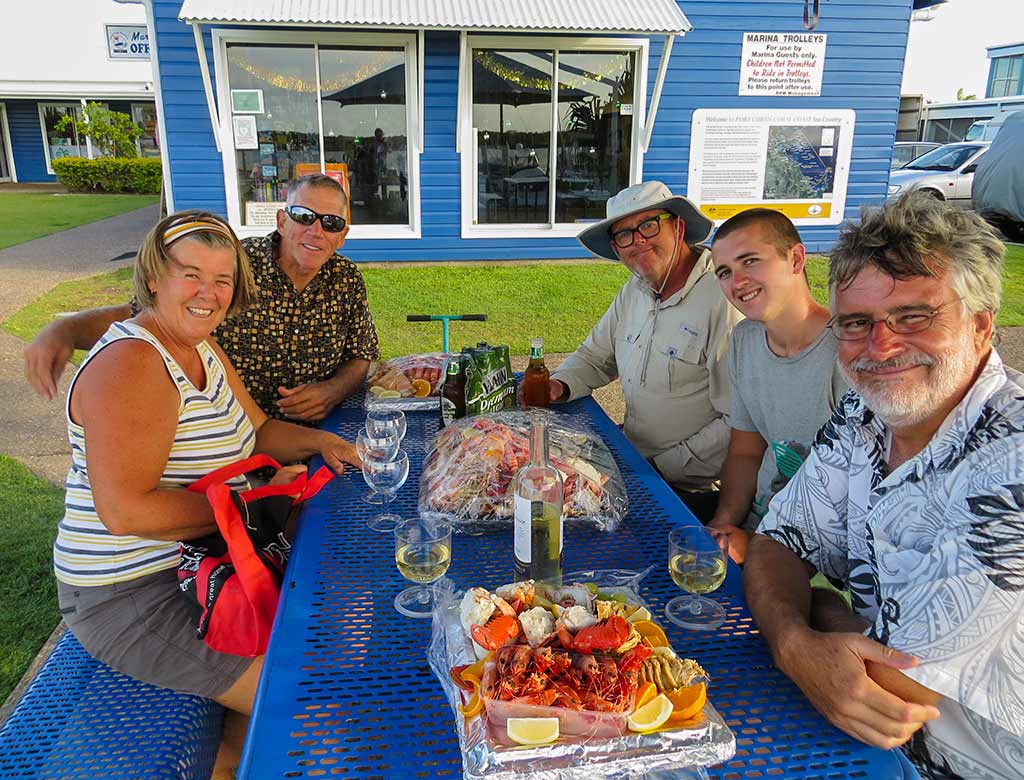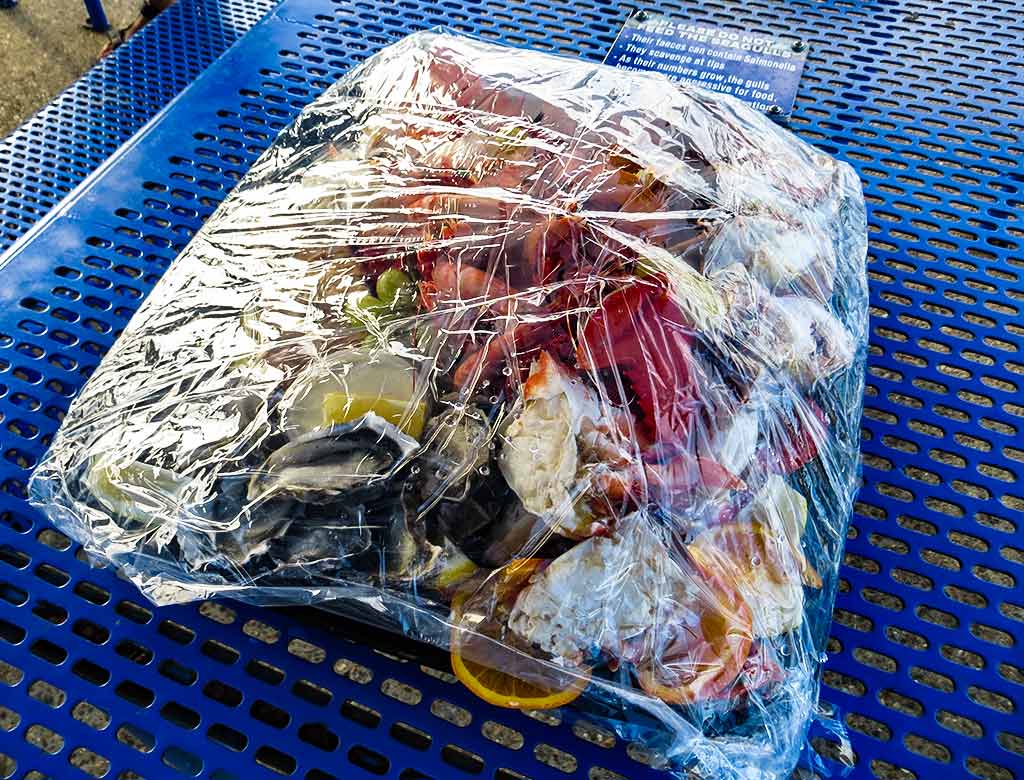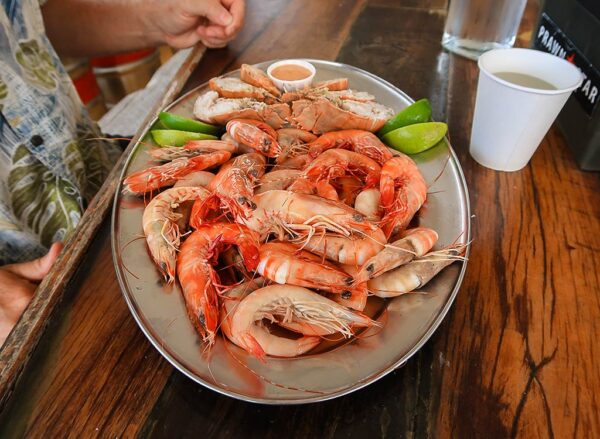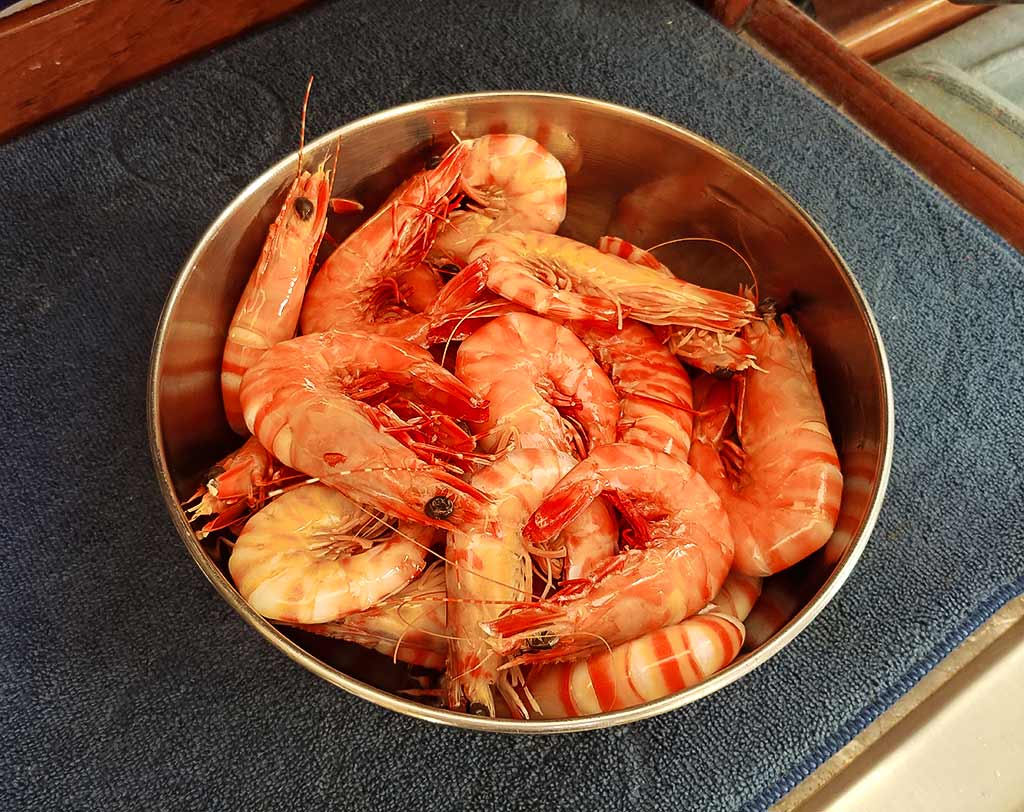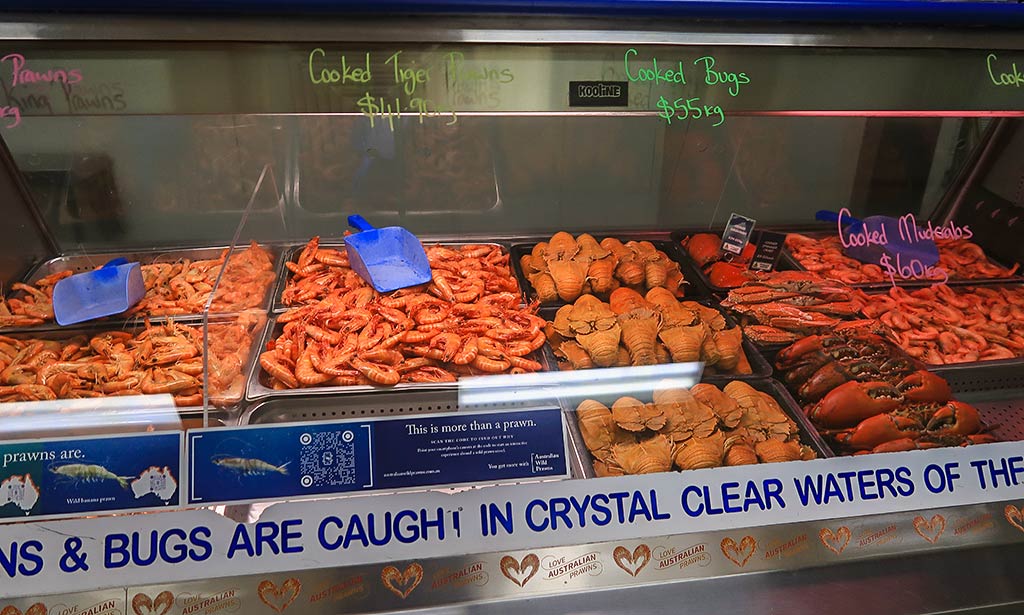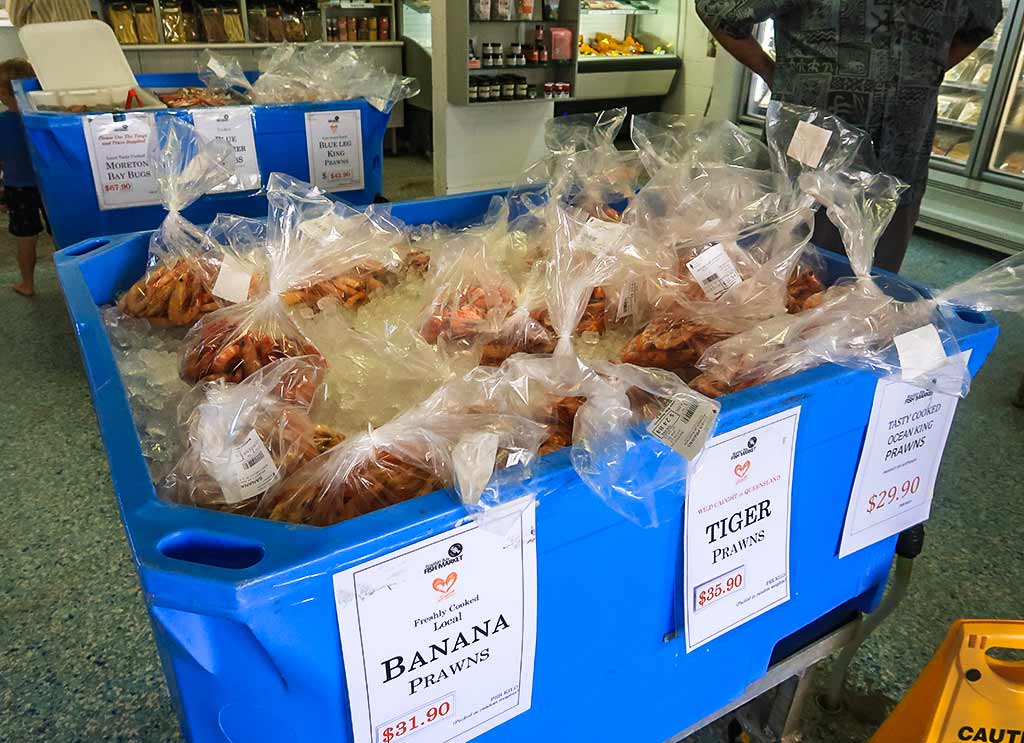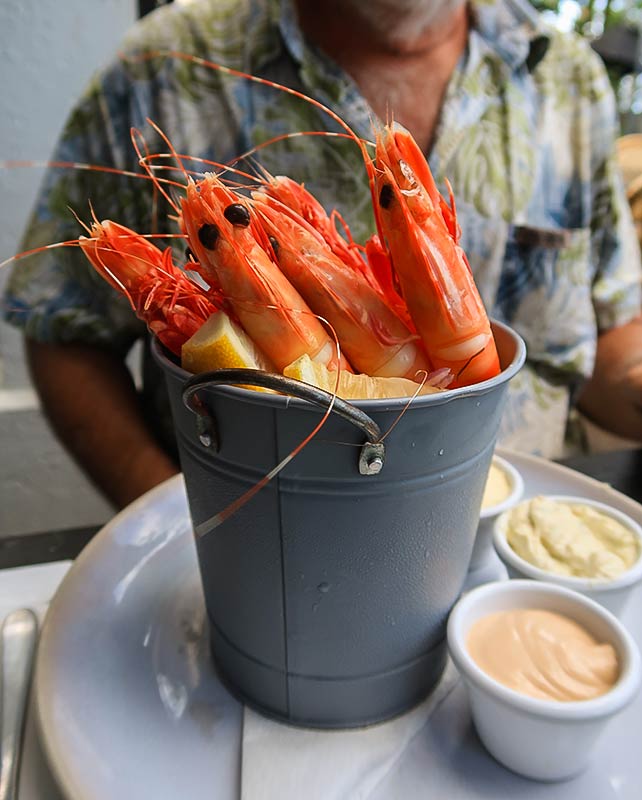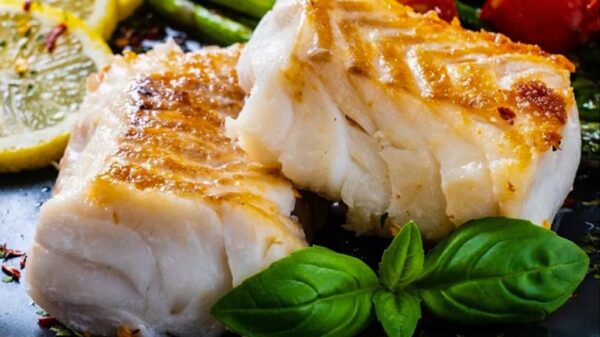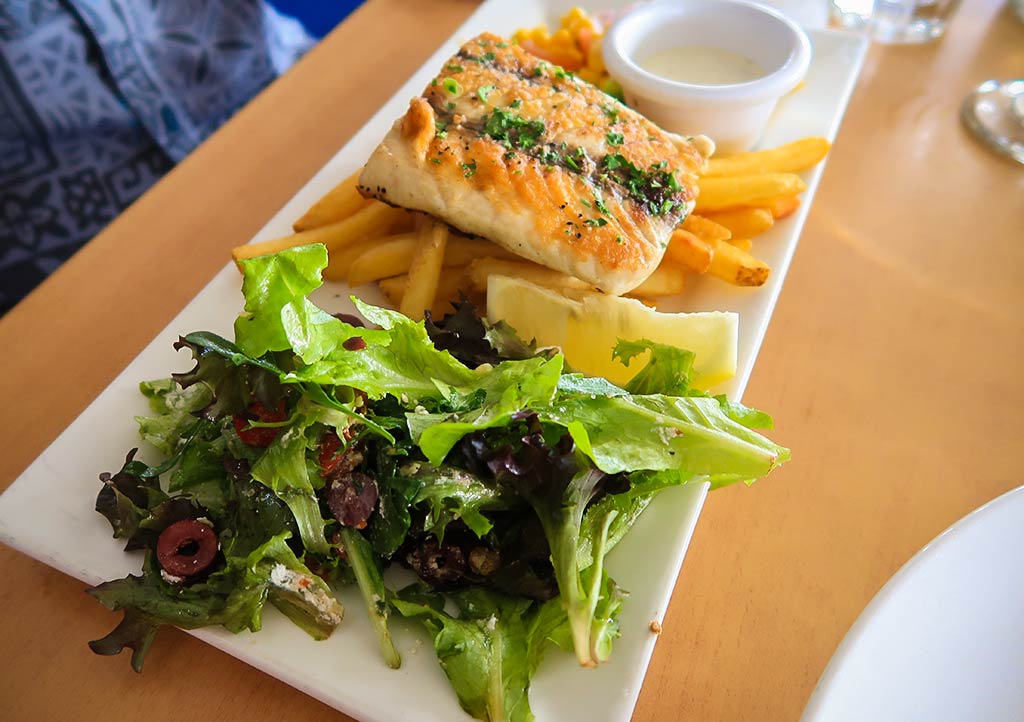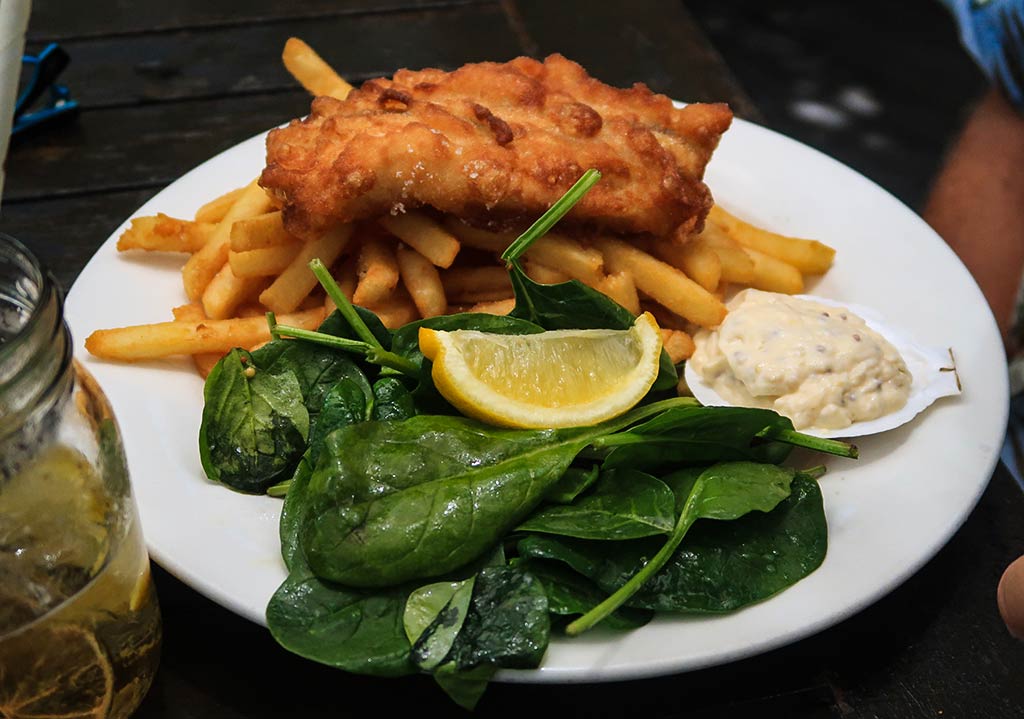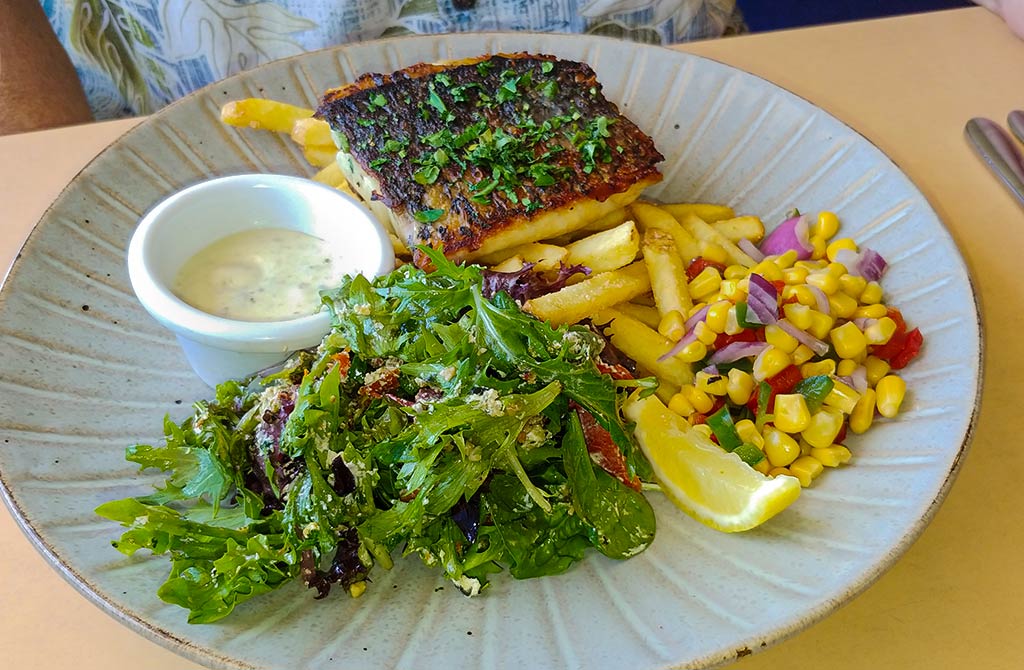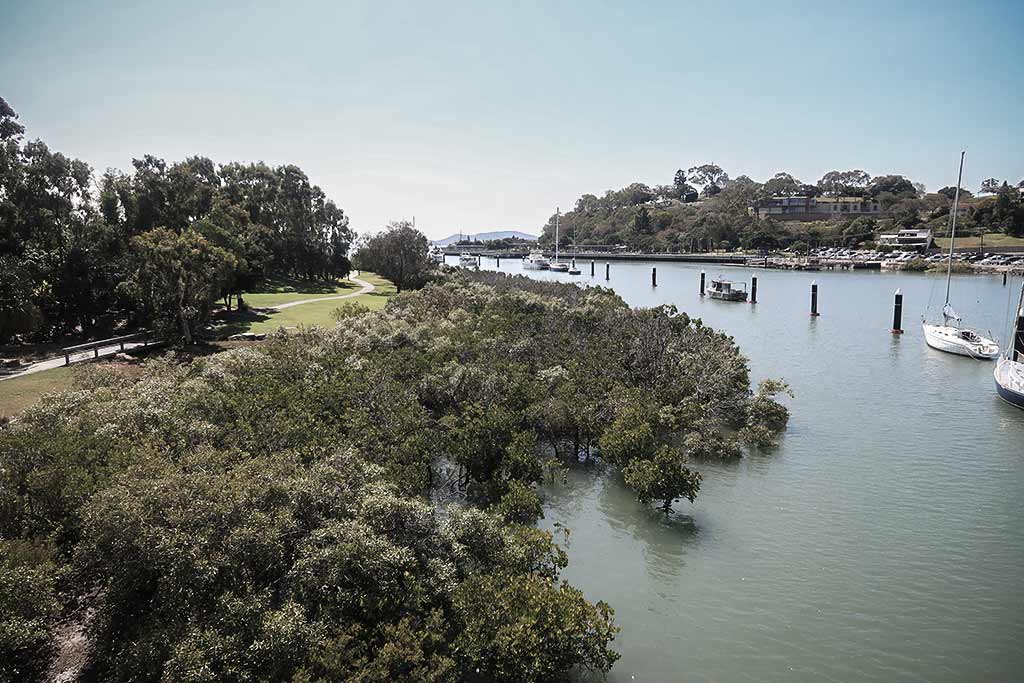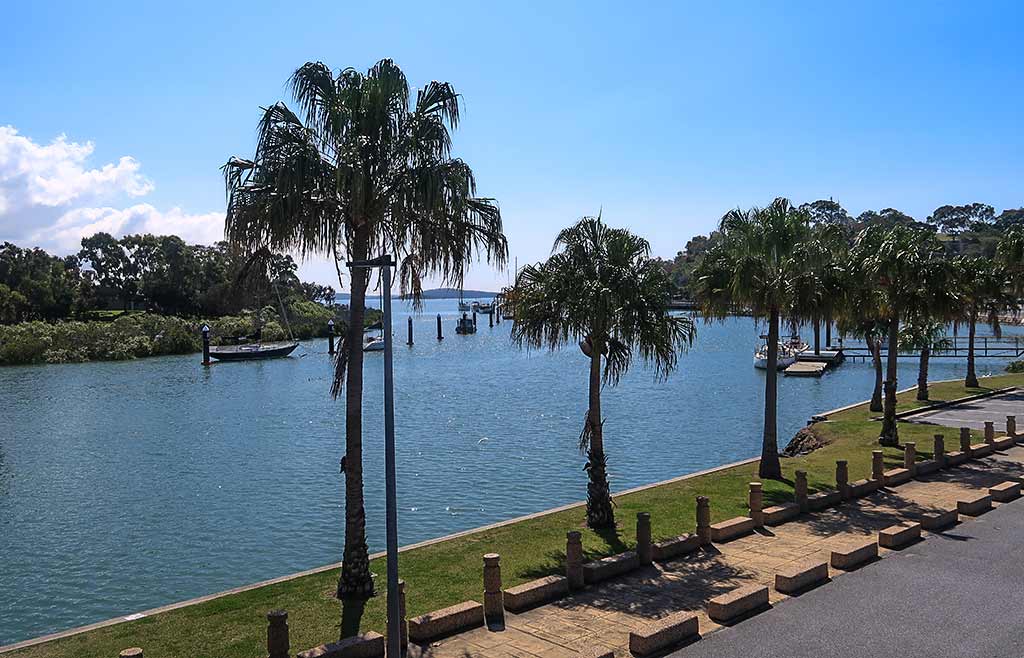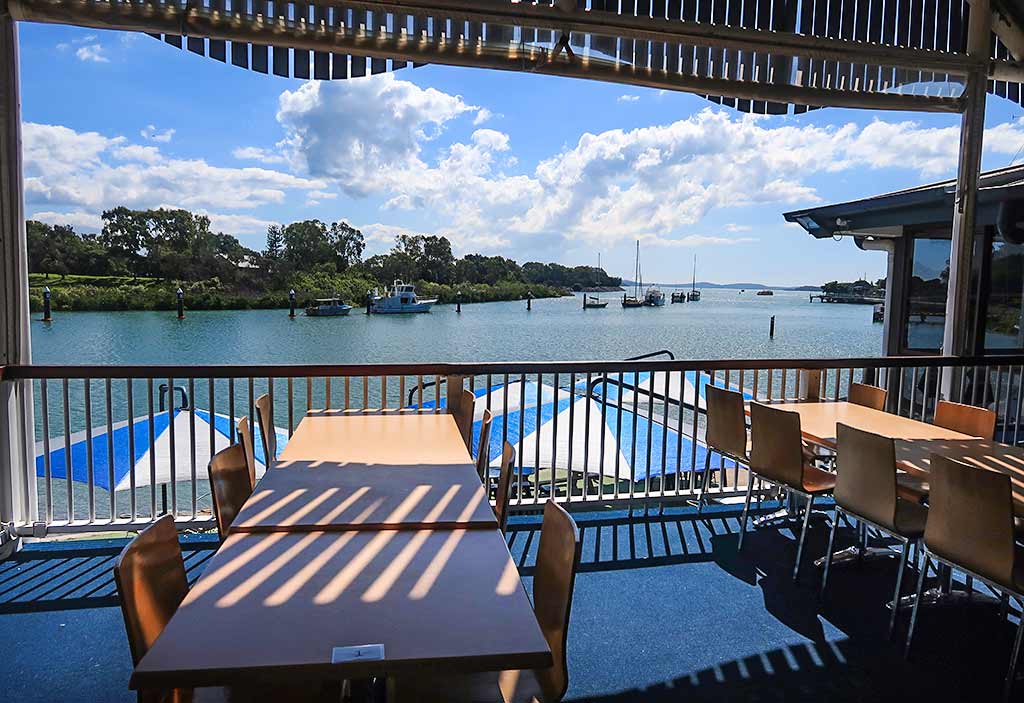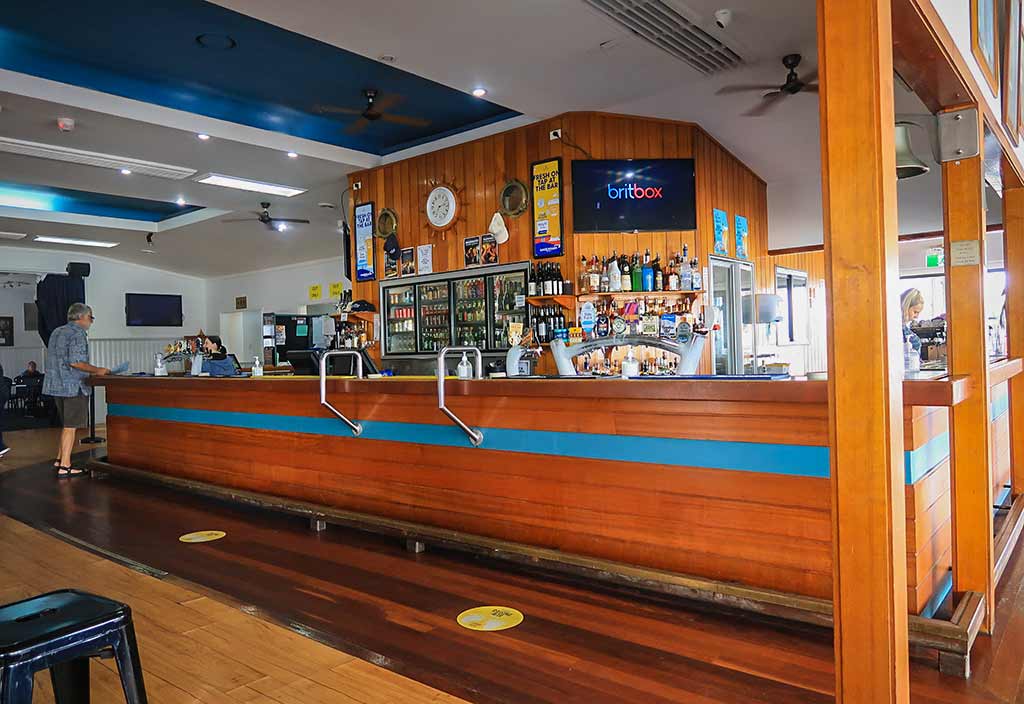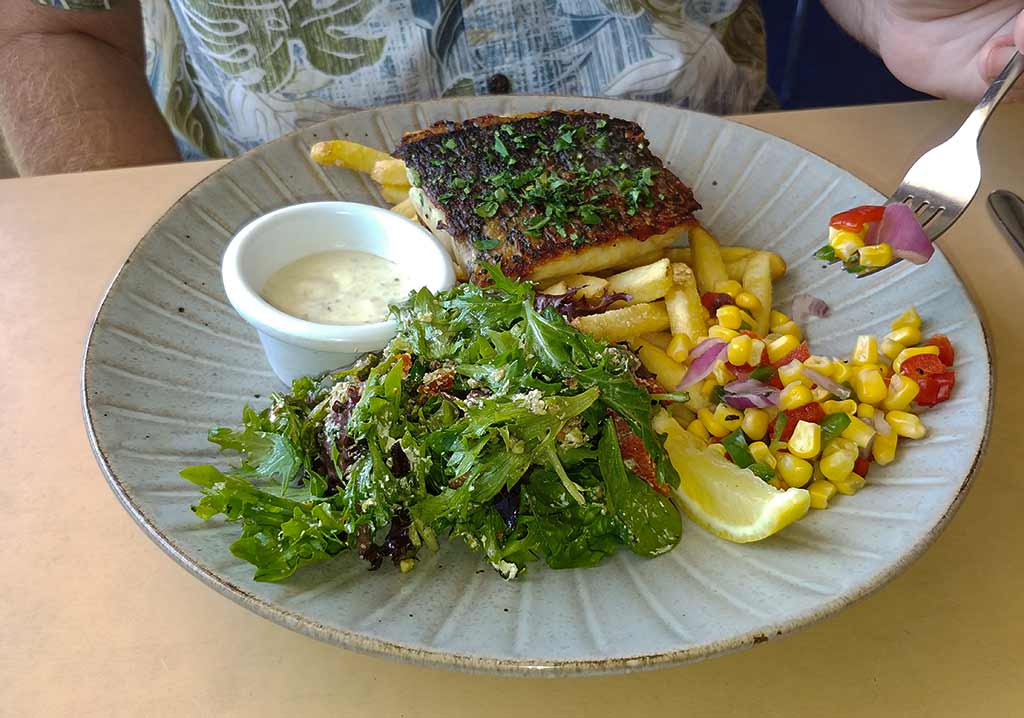(Posted November 26, 2022)
I’ve posted about the joy of eating Australian prawns, but that’s only part of the story. Aside from being served on their own, they often play a starring role in something larger: the cold seafood platter.
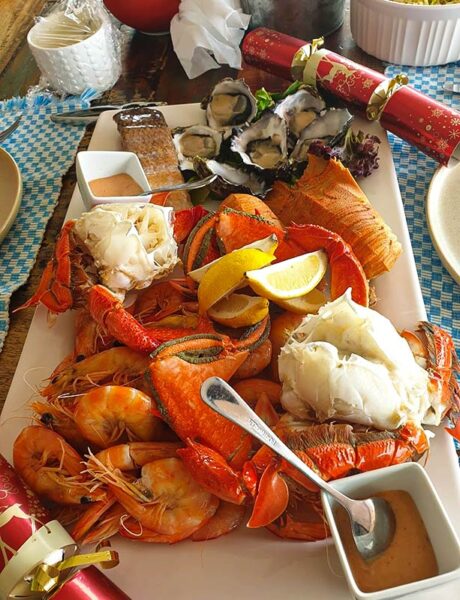
Generally cold seafood platters are sold at fish markets or takeaways. Restaurants may have seafood platters, too, but those are generally made up of hot seafood like battered fish and chips, calamari rings, crumbed scallops, cooked oysters, etc., and are found all over Australia.
Cold seafood platters, on the other hand, are a specialty of Queensland. Not surprisingly, the main ingredient is prawns. But added in are another Queensland specialty known as Moreton Bay Bugs. These are a type of slipper lobster, smaller than regular lobster with a flat head and no claws. They are chiefly caught in Moreton Bay near Brisbane but in fact are found in the waters off northern Australia and up into parts of southeast Asia.
As with prawns, they are often cooked and then served chilled. The tail is the best part, cut in half and added to the platter. And like prawns, they are wonderful dunked into seafood sauce.
Prawns and bugs make up a basic platter, but those platters can get more elaborate with the addition of oysters on the half shell, fat red spanner crab, a variety of sauces, and if really extra, a rock lobster. A fully loaded cold seafood platter is a work of art and something to behold! Below, some prawn and bug seafood combos . . .
Our first experience with a cold seafood platter was in 2014 when we arrived at the Bundaberg Marina in Queensland. At that time, as a welcome and introduction to the area, the marina was gifting each new arriving boat with a voucher for a cold seafood platter from Ocean Pacific Seafoods, a seafood market located right at the marina. In this case, it was an elaborate platter, beautifully arranged with prawns, Moreton Bay bugs, and Spanner Crab.
Three yachts arrived from New Caledonia at the same time and after checking in, we all went to order our seafood platters. That evening we brought our feasts to an outdoor table so we could enjoy them together. What a treat that was!
I will mention that one reason these platters are so popular here, aside from this being where platter-type seafood is harvested, is Queensland is in the tropics and tends to have very warm weather. Thus a cool refreshing seafood platter really hits the spot.
Not knowing much about Queensland back when we landed in Bundaberg, we assumed the platters were a specialty of that particular city; so we didn’t seek them out as we made our way south. What a shame, but at least we know better this time around and have enjoyed several of these platters, usually bought in a seafood market and brought back to our boat to have with cold beer and a binge-worthy TV show. We are really going to miss these platters when we leave Australia! –Cyndi

